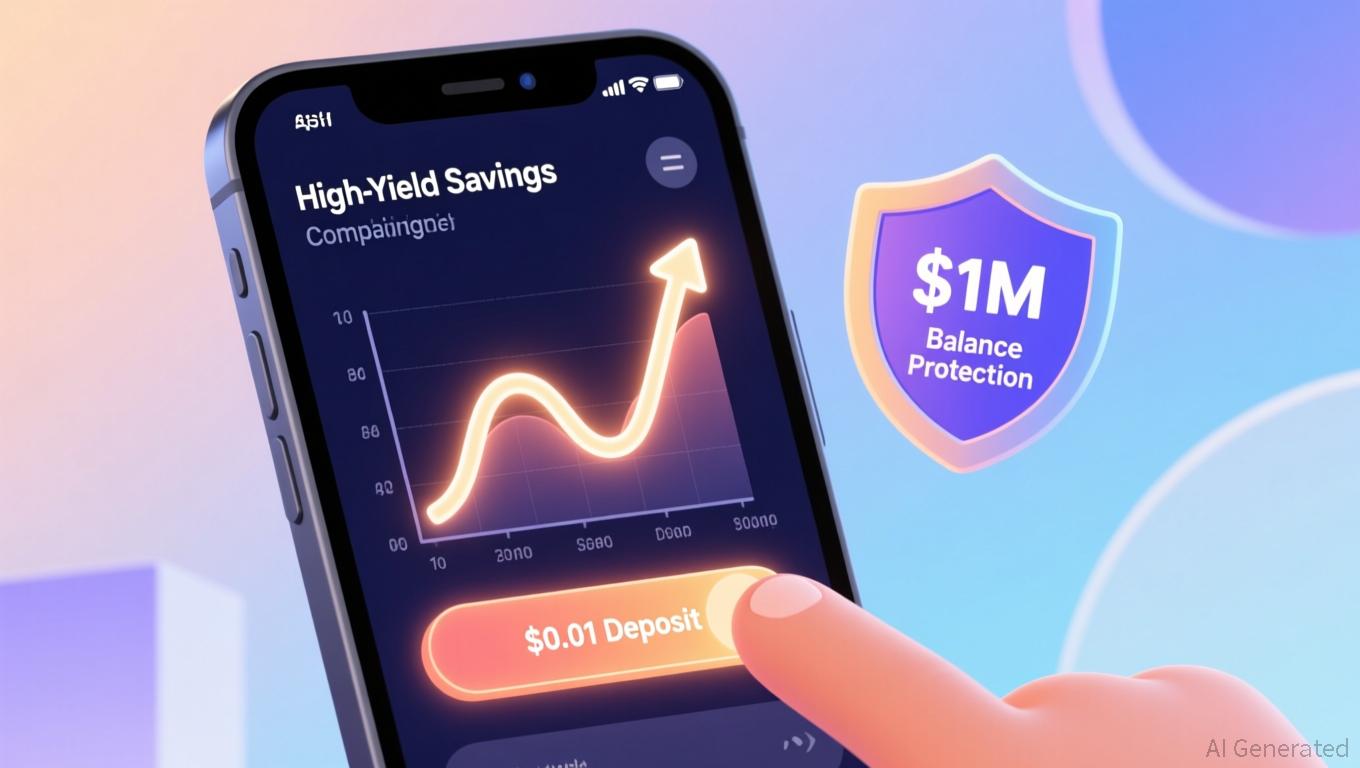Bitcoin's Latest Price Fluctuations and Growing Institutional Interest: Optimal Timing for Investment as Regulations Become Clearer and Economic Conditions Evolve
- Bitcoin's 2025 volatility reflects institutionalization, with $11B in Q3-Q4 2025 ETF inflows and corporate buyers like MicroStrategy accumulating BTC. - Regulatory clarity via the GENIUS Act and Tether's Latin American expansion accelerated institutional adoption, despite U.S. state-level restrictions creating short-term uncertainty. - Macroeconomic tailwinds including Fed rate cuts and $96T global M2 money supply supported Bitcoin's $200,000 price target, lowering capital costs for long-term holdings. -
The Institutionalization of Bitcoin: A New Paradigm
The recent swings in Bitcoin’s price, such as the 14% drop on centralized exchanges on October 10, 2025, highlight the expanding role of institutional players. Unlike previous corrections led by retail panic selling, this event was followed by persistent buying, indicating a transformation in market behavior.
This evolution is
Regulatory Clarity: A Catalyst for Institutional Adoption
Regulatory changes in 2025 have been crucial in establishing Bitcoin’s legitimacy among institutional investors. The approval of the GENIUS Act in July 2025, which clarified rules for stablecoins, was a major milestone. By addressing compliance concerns, the legislation
Nonetheless, regulatory hurdles remain. In the United States, new state-level rules have introduced short-term unpredictability, with businesses like Bitcoin Depot
Macroeconomic Tailwinds: Liquidity and Rate Cuts
Macroeconomic factors have also played a significant role in shaping Bitcoin’s trajectory in 2025. The Federal Reserve’s decision to lower interest rates by 25 basis points in September 2025, along with expectations for further cuts, has
Institutional investors are well aware of these favorable macroeconomic trends.
Strategic Entry Points: Dollar-Cost Averaging and Volatility-Driven Frameworks
For those investing in Bitcoin, adopting strategies used by institutions can help manage risk. Dollar-cost averaging (DCA) continues to be a reliable method, especially as institutions tend to buy during market downturns. The October 10 price drop, for example,
Additionally, frameworks that focus on volatility—such as monitoring on-chain indicators like the MVRV-Z score—can assist in pinpointing when the market is overbought or oversold. While the current reading suggests caution, it
Conclusion: A Convergence of Forces
The volatility seen in Bitcoin throughout 2025 is less a sign of weakness and more a testament to its evolution as a mature asset. The intersection of growing institutional involvement, clearer regulations, and supportive macroeconomic conditions has created an environment where volatility is becoming an inherent characteristic. For investors, the key is to adapt to these structural changes by focusing on patience, diversification, and a long-term perspective. As the market continues to develop, those who understand and embrace this new landscape may be best positioned to capitalize on Bitcoin’s future growth.
Disclaimer: The content of this article solely reflects the author's opinion and does not represent the platform in any capacity. This article is not intended to serve as a reference for making investment decisions.
You may also like
Ethereum News Update: The Dangers of Leverage: Crypto Whale Suffers $26 Million Loss Amid Market Decline
- A crypto whale lost $26.348M by partially liquidating 15x leveraged BTC and 3x leveraged ETH positions amid declining prices. - The whale's $250M portfolio faces $3.734M unrealized losses if liquidated, with a $65,436 WBTC liquidation threshold. - Broader market trends show $260.66M ETH ETF outflows and ETH/BTC prices below $2,800 and $87,000, worsening leveraged traders' risks. - A HyperLiquid user lost $4.07M from a 6x ETH long position, reflecting systemic leverage challenges as macroeconomic factors

Bitcoin Updates: U.S. Market Pessimism Contrasts with Asian Confidence as Bitcoin Drops Near $85,000
- Bitcoin's price fell to $85,000 in Nov 2025, down 7% in 24 hours and 20% monthly, driven by dormant wallet sales and bearish derivatives bets. - Surging sell pressure from inactive wallets and rebalanced derivatives toward puts highlight deteriorating market structure and liquidity. - Fed rate-cut uncertainty and regional divergences—U.S. bearishness vs. Asian buying—exacerbate volatility amid $565M in liquidations. - Analysts split on recovery: some see consolidation near $85K-$100K, others warn of a po

Aave News Today: Aave’s High-Return Application Offers a Solution to Inflation’s Impact on Savings
- Aave , a top DeFi lending protocol, launched a consumer savings app offering up to 9% APY, competing with traditional banks and fintech platforms. - The app targets mainstream users with zero minimum deposits, real-time compounding, and $1M balance protection, aiming to simplify DeFi accessibility. - While outperforming traditional savings rates, Aave's insurance transparency and security history raise concerns amid crypto's volatile trust landscape. - This move reflects DeFi's neobank trend, with high-y

The PENGU USDT Sell Alert: Is This a Red Flag or Simply a Market Adjustment?
- PENGU USDT's sell signal highlights concerns over structural risks in stablecoin-backed crypto strategies amid volatility and regulatory shifts. - The token's 28.5% decline since October 27, coupled with weak technical indicators, reflects broader fragility in algorithmic stablecoins and leveraged positions. - Growing institutional adoption of asset-backed alternatives like USDC contrasts with PENGU's speculative NFT-driven model, which lacks robust collateral or compliance. - While Fed policy easing may